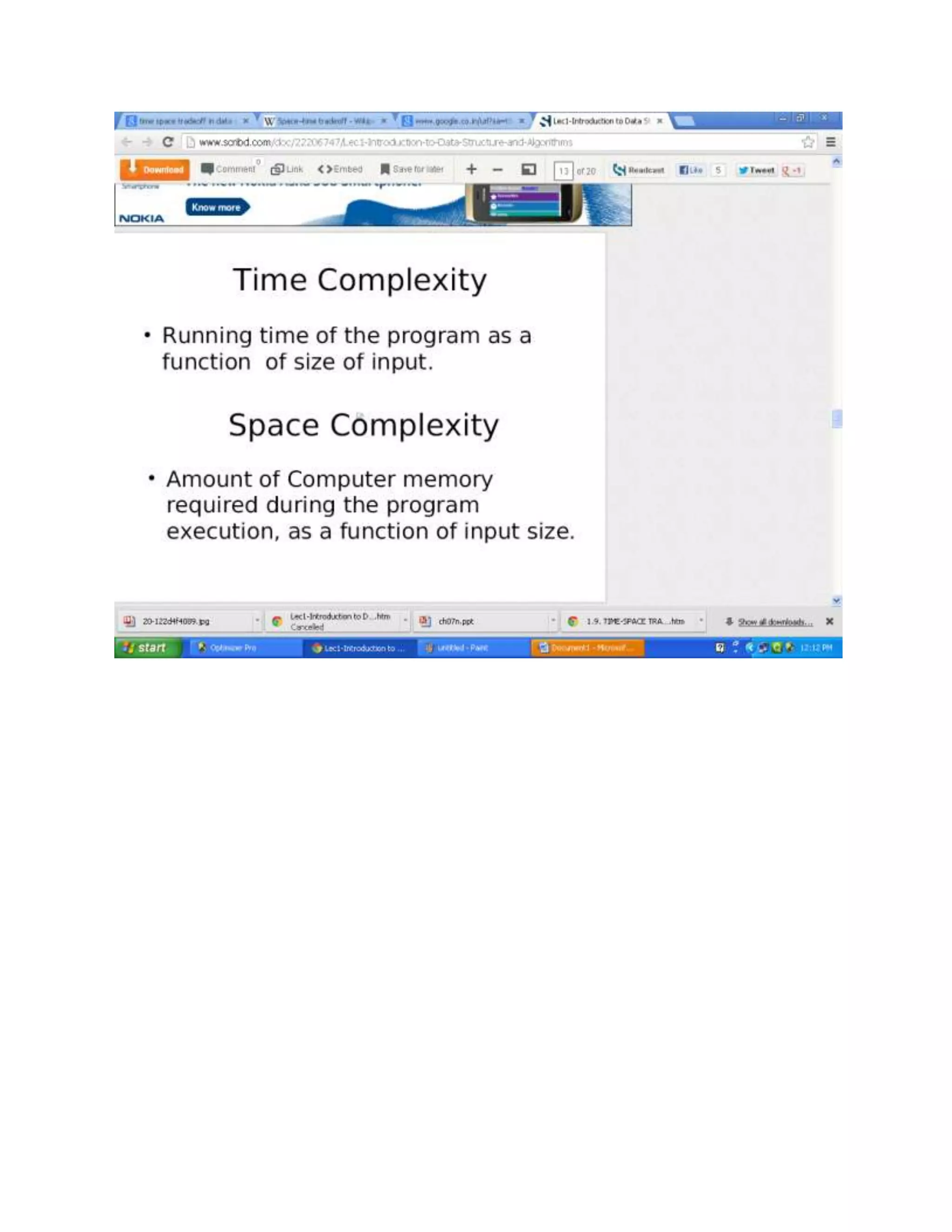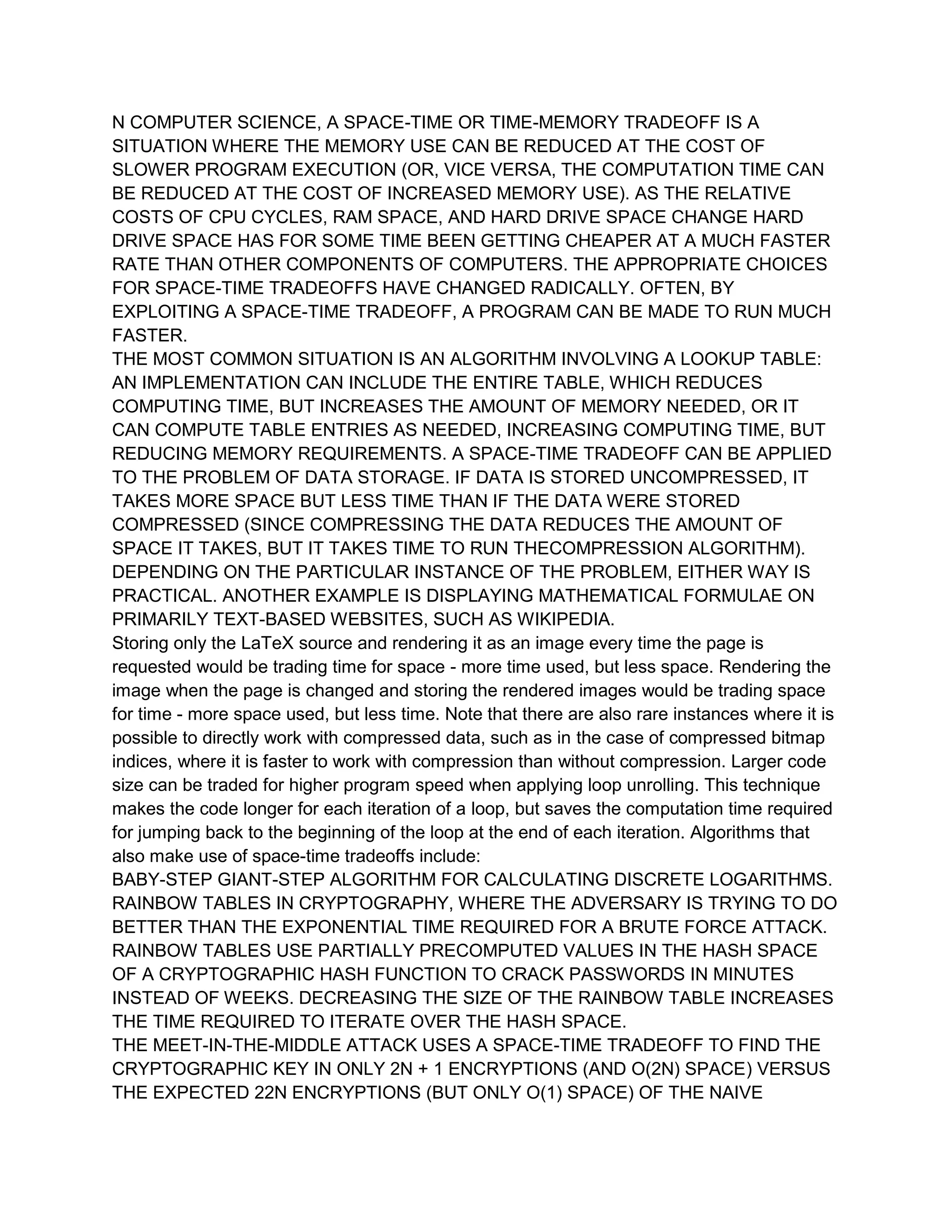A space-time tradeoff in computer science refers to situations where memory use can be reduced by increasing computation time, or vice versa. As hardware costs have changed over time, with storage becoming cheaper relative to other components, the optimal approach to these tradeoffs has also changed. Exploiting space-time tradeoffs is common in algorithms using lookup tables, data compression/storage, and other techniques such as loop unrolling.

![In computer science, a space–time or time–memory tradeoff is a situation where
the memory use can be reduced at the cost of slower program execution (and, conversely,
the computation time can be reduced at the cost of increased memory use). As the relative
costs of CPU cycles, RAM space, and hard drive space change—hard drive space has for some
time been getting cheaper at a much faster rate than other components of computers[citation
needed]
—the appropriate choices for space–time tradeoffs have changed radically. Often, by
exploiting a space–time tradeoff, a program can be made to run much faster.](https://image.slidesharecdn.com/doc5-130408225941-phpapp01/75/Doc5-2-2048.jpg)

